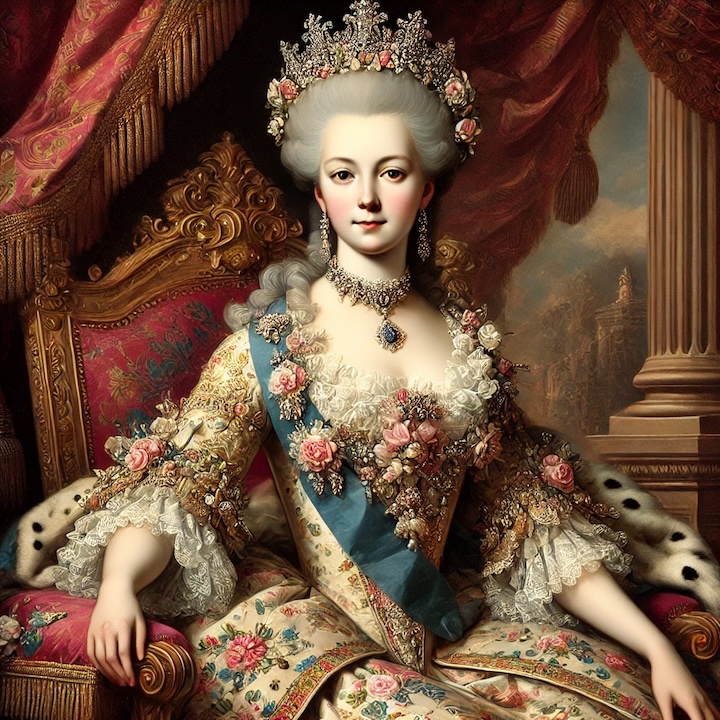Marie Antoinette (1755-1793)

Daughter of Holy Roman Empress, Maria Theresa, Marie Antoinette ill-starred tenure as Queen of France was marked by her subjects' intense dislike for her. Though reputed to possess the strength and dignity befitting her status, she was more widely known for excesses of extravagance and her seeming inability to appreciate the financial difficulties of many Frenchmen. She allied herself with those forces who lobbied against change for the country. As the country roiled with revolutionary unrest, her indecisive husband could not save the monarchy. Louis was executed in early 1793; Marie Antoinette went to the guillotine in October of that year. .
Marie Antoinette, the daughter of Holy Roman Empress Maria Theresa, became one of the most iconic and controversial figures in French history. Born in 1755 as an Archduchess of Austria, she was married off at the age of 14 to the future King Louis XVI of France, in an effort to solidify the alliance between Austria and France. Her tenure as Queen of France was ill-starred, marked by political turmoil, intense public disdain, and ultimately, a tragic end during the French Revolution.
Marie Antoinette’s arrival in France was met with great expectations. As a young and beautiful foreign princess, she was expected to charm the French court and produce heirs to secure the Bourbon dynasty. Initially, she did succeed in captivating many with her beauty and charm. However, her popularity began to wane as she became associated with the excesses of the French monarchy and the decadence of the court at Versailles.
One of the most damaging aspects of Marie Antoinette’s reputation was her perceived extravagance. While it is true that the Queen enjoyed the finer things in life, her spending habits were not significantly more lavish than those of other royals of the time. However, in a country where many were struggling to afford basic necessities, her spending was seen as callous and out of touch. The famous, though apocryphal, quote “Let them eat cake,” attributed to Marie Antoinette, encapsulated this image of a monarch indifferent to the suffering of her people, although there is no evidence that she ever uttered these words.
Marie Antoinette’s difficulties were compounded by her association with conservative factions within the French court. As the French Revolution began to gather momentum in the late 1780s, she became a symbol of the old regime’s resistance to change. She was widely perceived as an enemy of reform and was blamed for many of the monarchy’s failures. Her close ties to Austria, her birthplace, further fueled suspicions that she was more loyal to her homeland than to France. This led to widespread distrust and conspiracy theories, including accusations that she was plotting with foreign powers to undermine the Revolution.
The King, Louis XVI, was an indecisive and weak ruler, and his inability to navigate the rapidly changing political landscape only worsened the situation. As revolutionary unrest spread throughout the country, the monarchy found itself increasingly isolated. The royal family’s attempt to flee France in 1791, known as the Flight to Varennes, was a disastrous failure and further eroded their credibility. The King’s reluctance to support constitutional reforms and his perceived collusion with foreign enemies led to his arrest and eventual execution in January 1793.
Marie Antoinette’s fate was sealed following her husband’s death. The Queen, now a widow, was imprisoned and subjected to months of harsh treatment. The revolutionaries saw her as a symbol of everything that was wrong with the old regime and were determined to see her punished. In October 1793, she was brought to trial on charges of treason, theft, and other crimes. The trial was a foregone conclusion, and she was found guilty and sentenced to death.
On October 16, 1793, Marie Antoinette was executed by guillotine in the Place de la Révolution in Paris. Her death marked the end of an era and was a potent symbol of the fall of the monarchy in France.
 >
>